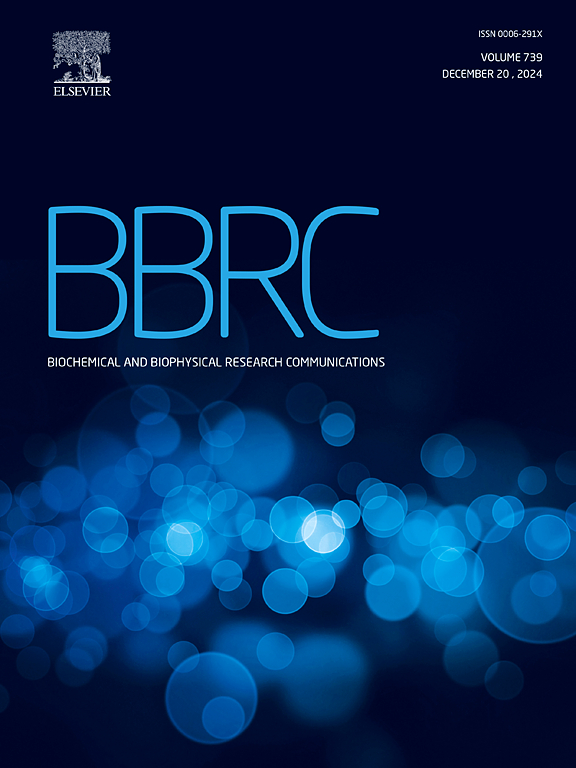A CRISPR-based high-throughput screening system identifies bromodomain inhibitors as transcriptional suppressors of CYP11B1
IF 2.5
3区 生物学
Q3 BIOCHEMISTRY & MOLECULAR BIOLOGY
Biochemical and biophysical research communications
Pub Date : 2025-04-08
DOI:10.1016/j.bbrc.2025.151779
引用次数: 0
Abstract
CYP11B1 encodes steroid 11β-hydroxylase, the final rate-limiting enzyme for cortisol biosynthesis in the adrenal cortex. Excessive cortisol production is a hallmark of Cushing's disease (CD). While direct enzymatic inhibitors have been explored, achieving specificity remains a challenge due to the high homology between CYP11B1 and CYP11B2, highlighting transcriptional suppression of CYP11B1 as an alternative therapeutic strategy. To identify transcriptional regulators of CYP11B1, we generated genome-edited H295R adrenal cells carrying a luciferase reporter knocked into the endogenous CYP11B1 locus. Using this reporter cell line, we established a high-throughput screening (HTS) platform and screened a focused chemical library targeting epigenetic-related factors, given the importance of epigenetic mechanisms in gene regulation. Among eight candidate compounds identified, we focused on JQ1, a bromodomain inhibitor. JQ1 significantly suppressed Forskolin-induced CYP11B1 promoter activity and mRNA expression without causing cytotoxicity, suggesting the involvement of epigenetic readers in the transcriptional regulation of steroidogenic genes. Furthermore, the reporter-based HTS platform developed here, when combined with our previously established CYP11B2-luciferase system, may facilitate the identification of compounds that selectively modulate adrenal steroidogenic pathways. These findings provide a foundation for the development of novel transcription-targeted therapies for CD.
求助全文
约1分钟内获得全文
求助全文
来源期刊
CiteScore
6.10
自引率
0.00%
发文量
1400
审稿时长
14 days
期刊介绍:
Biochemical and Biophysical Research Communications is the premier international journal devoted to the very rapid dissemination of timely and significant experimental results in diverse fields of biological research. The development of the "Breakthroughs and Views" section brings the minireview format to the journal, and issues often contain collections of special interest manuscripts. BBRC is published weekly (52 issues/year).Research Areas now include: Biochemistry; biophysics; cell biology; developmental biology; immunology
; molecular biology; neurobiology; plant biology and proteomics

 求助内容:
求助内容: 应助结果提醒方式:
应助结果提醒方式:


